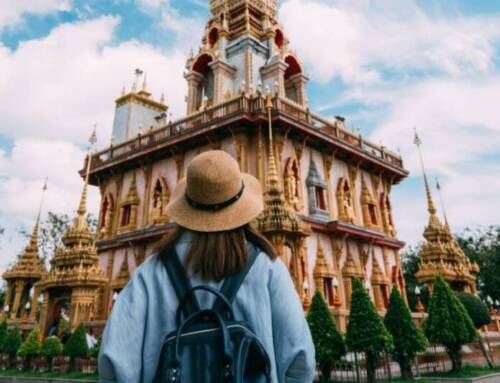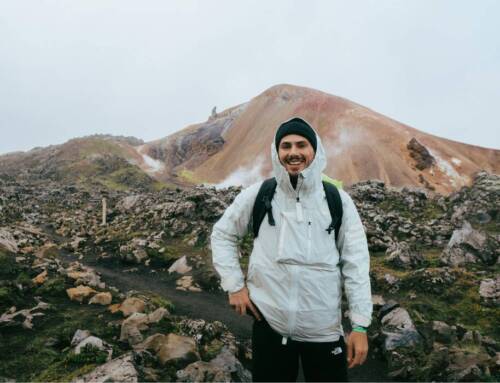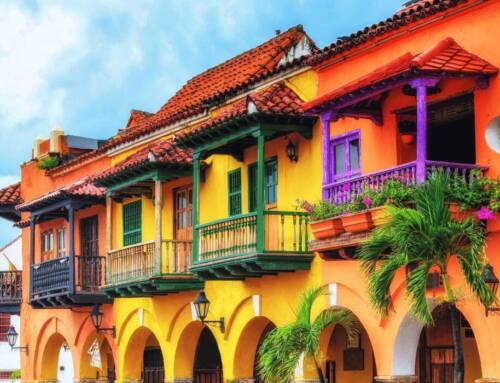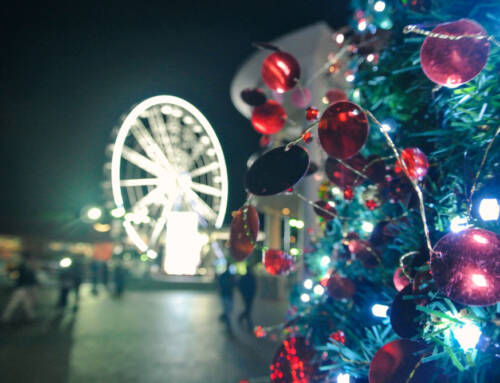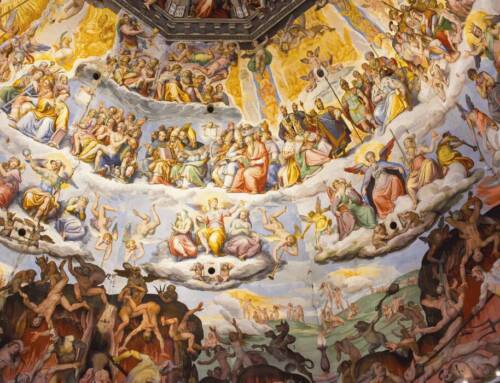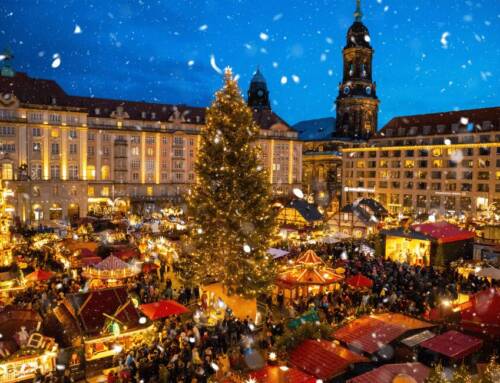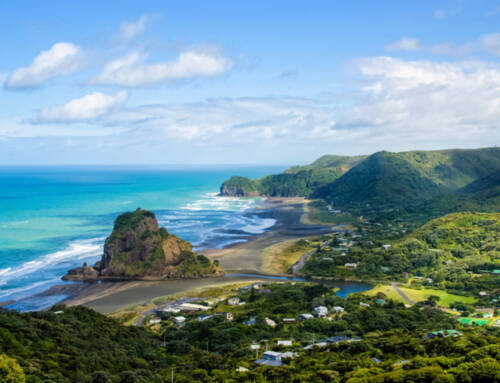Tucked between two Southeast Asian tourism giants, Thailand and Vietnam, Laos stretches out as a slender country full of surprises for travelers. With a history scarred by constant wars with neighbors and colonizers, the Lao people seem to have found peace in recent decades. When you visit some of the best places to see in Laos, you’ll be welcomed by kind and hospitable locals. You’ll also discover a rich culture, beautiful and contrasting landscapes, and delicious cuisine, all of which make Laos a truly complete destination.
Index
Why you should visit Laos
In the north, countless villages are scattered along the slopes of mountains blanketed in jungle vegetation. In the south, thousands of islands dot the waters of the historic and legendary Mekong River. Everywhere you go, Laos’ rural character stands out, reflected in the endless fields that change color with the sun.
If you’re looking for cities with soul, Vientiane will surprise you. Its mix of French colonial influence and Asian Buddhism captivates everyone who sets foot there. Completely different in charm is the romantic Luang Prabang: ancient, mystical, spiritual, and stunningly beautiful.
Laos is also perfect for active tourism. In the north, you’ll find little-traveled trekking routes where you can immerse yourself in the country’s cultural richness. Kayaking on the Mekong gives you an intimate, slow view of daily Lao life.
And when it’s time to rest, you’ll be treated to a table filled with mouthwatering dishes influenced by both French and Asian traditions.
Laos doesn’t have the flashy marketing of its Southeast Asian neighbors, and it doesn’t want or need it. It’s like finding a unique gem hidden in your grandmother’s jewelry box, a treasure you’ll want to keep secret, sharing only with those who truly deserve it.
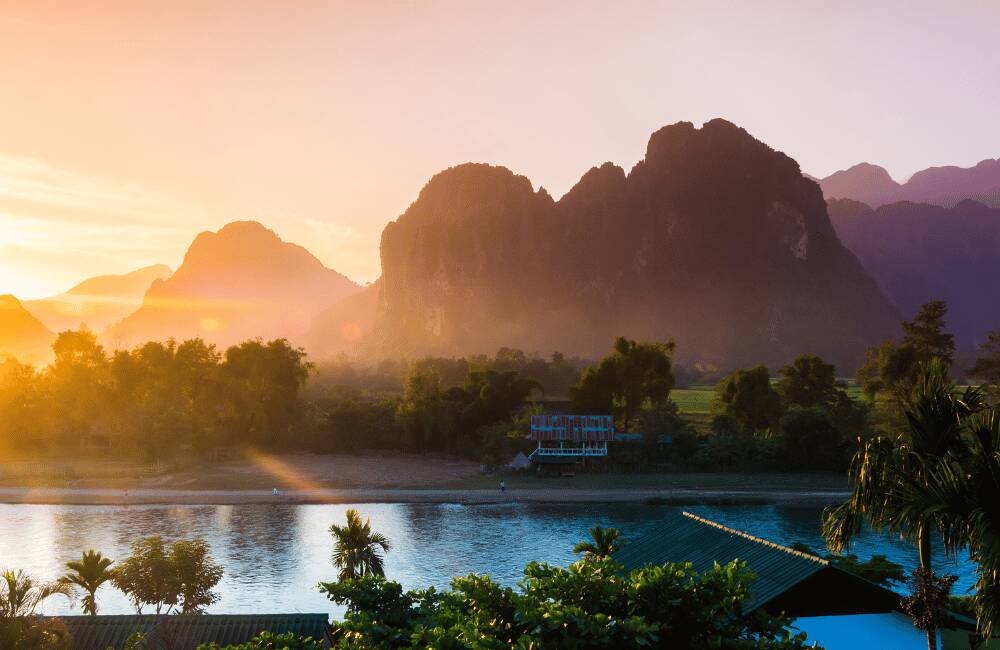
What to See in Laos
Vientiane
Most trips to Laos begin in Vientiane. The capital has a special charm and none of the chaos typical of other Asian capitals.
Not far from the center, you’ll find Pha That Luang, the most sacred monument in the country. This massive golden stupa is Laos’ national symbol and the perfect place to soak in the local spirituality. Believed to have been first built in the 3rd century, it’s been reconstructed several times, the version you see today dates back to the 1930s.
Another must-see is Patuxai, a triumphal arch blending Lao and French influences. Climb to the top for one of the best panoramic views of the city.
For history and culture, head to Wat Sisaket, Vientiane’s oldest temple, with thousands of tiny Buddha statues.
To relax, take a stroll along the Mekong River, especially at sunset. Here you’ll find a lively night market, delicious street food, and a vibrant atmosphere. Try Lao specialties like larb (a spiced meat salad) or sticky rice with mango.
If you have more time, visit the Buddha Park (Xieng Khuan), about 25 km from Vientiane. It’s a surreal spot filled with over 200 Buddha statues and other religious sculptures.
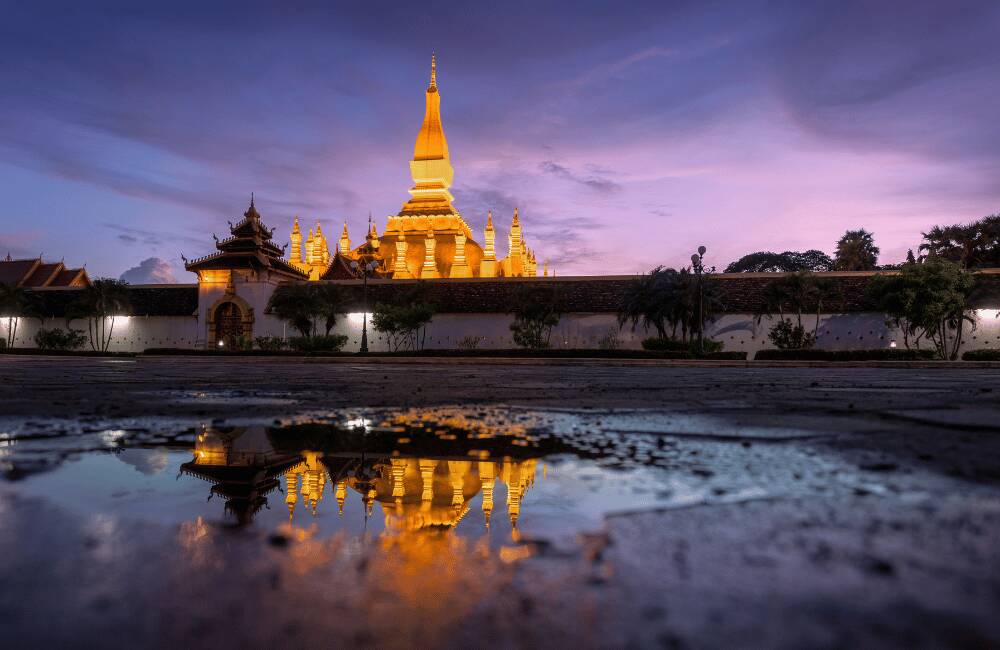
Luang Prabang
Just saying the name of this city feels poetic. Nestled in northern Laos amid the jungle, Luang Prabang casts a spell on every traveler.
A UNESCO World Heritage Site, the city perfectly blends nature, culture, and spirituality.
At dawn, climb Mount Phousi. The short hike rewards you with sweeping views of the Mekong River and the city wrapped in morning mist. At the base, wander the morning market and grab some local breakfast.
Don’t miss the Royal Palace Museum, home to the sacred Phra Bang Buddha statue that gives the city its name.
Luang Prabang is also a religious hub, with many temples. The most famous is Wat Xieng Thong, decorated with golden walls and stunning mosaics.
At night, the night market comes alive with handicrafts, food stalls, and the famous Lao sandwich. Pair it with an ice-cold Beerlao for the full experience.
Outside the city, cool off at the Kuang Si Waterfalls, about 30 km south. The turquoise cascades form natural pools perfect for swimming.
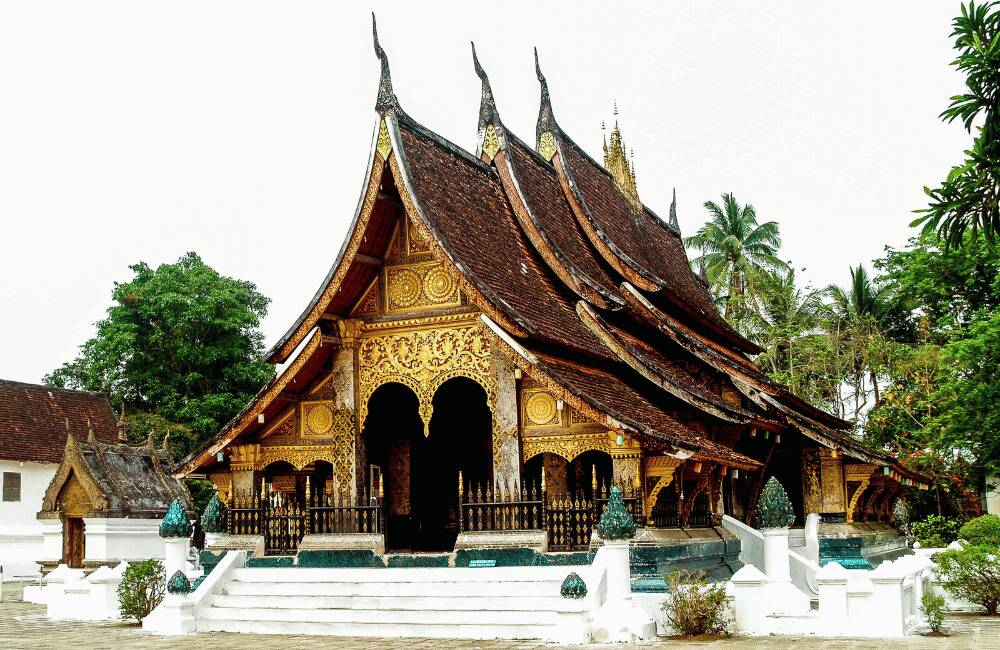
Si Phan Don (4,000 Islands)
Down south lies Si Phan Don, or “the 4,000 Islands,” a hidden paradise on the Mekong where time seems to stop.
Life here moves slowly between palm trees, rice paddies, and stilt houses. Rent a bike and explore Don Khon Island, with remnants of colonial-era railways and the Li Phi Waterfalls. For total relaxation, head to Don Det, where hammocks and magical sunsets await.
One of the highlights is spotting the rare freshwater dolphins near Don Khon. A kayak or boat ride at sunset gives you the best chance to see them.
Vang Vieng
Once known as a party hub, Vang Vieng is now a balanced mix of adventure and relaxation.
Surrounded by dramatic karst mountains and crossed by the Nam Song River, it’s a playground for outdoor lovers. You can kayak, rock climb, or try tubing, floating downstream in a giant inner tube while soaking in the scenery.
Motorbike rentals let you explore nearby caves like Tham Chang, or dip into turquoise lagoons.
If you prefer peace, relax in riverside cafés with fruit shakes while watching the sunset. Local cuisine here blends Lao and Western flavors, perfect after a day of exploring.
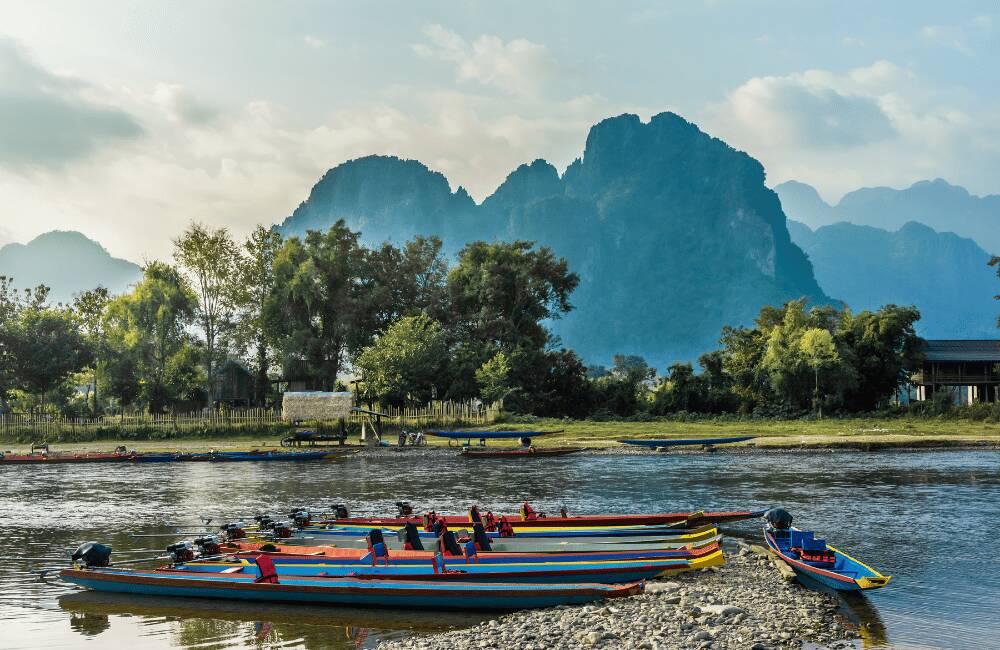
Bolaven Plateau
The Bolaven Plateau smells of coffee and jungle. Travel by motorbike or tuk-tuk along winding roads through lush landscapes.
The cooler climate here makes waterfalls the stars of the show. Tad Fane and Tad Yuang are two of the most spectacular.
Coffee lovers can tour plantations and taste what many consider some of the world’s best brews.
Local ethnic villages give you a glimpse into traditional Lao life, where hospitality and centuries-old customs thrive.
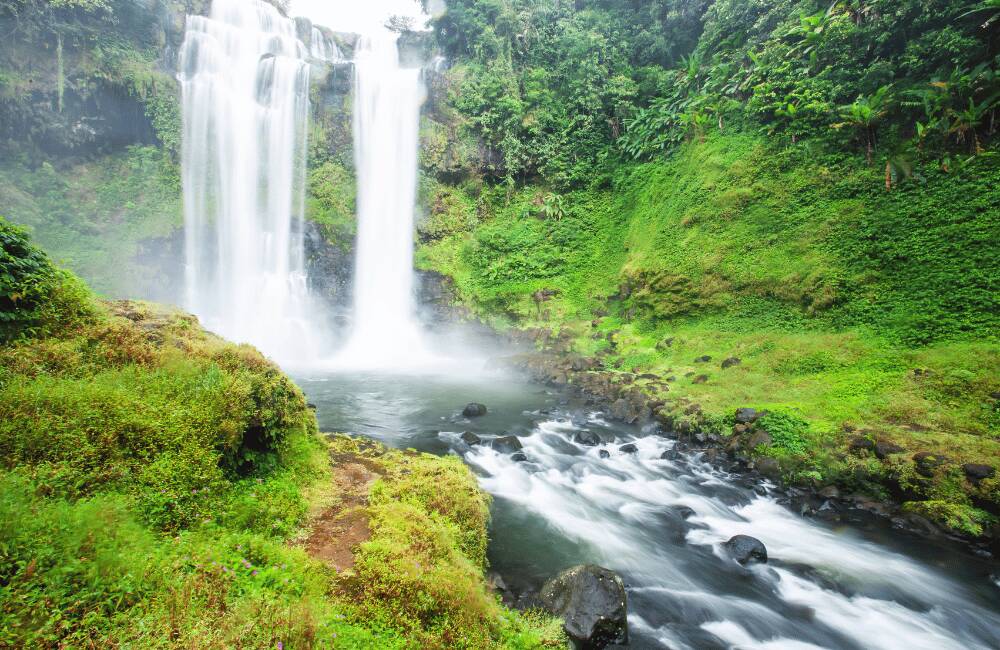
Luang Namtha
For trekking fans, Luang Namtha in northern Laos is a must.
Explore the Nam Ha National Protected Area, with dense forests, hidden waterfalls, and rich biodiversity. You might spot monkeys, exotic birds, or even deer.
Local communities like the Akha and Khmu welcome visitors warmly. Staying overnight in their villages offers a chance to experience traditional life and food.
If you prefer biking or kayaking, the surrounding rice paddies, rivers, and mountain trails won’t disappoint.
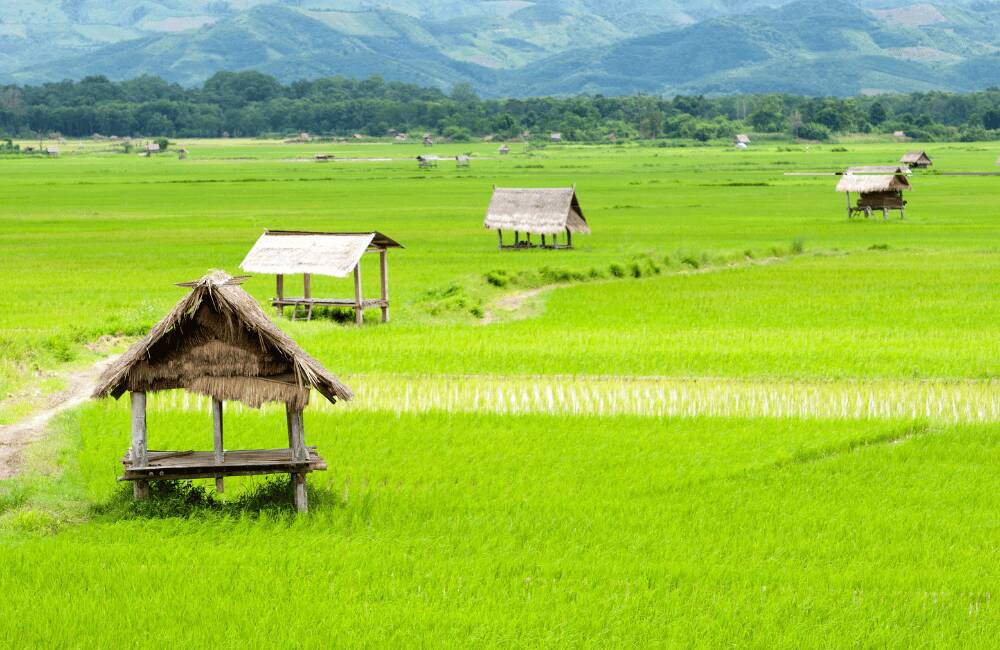
Wat Phu
A UNESCO World Heritage Site, Wat Phu is an ancient Khmer temple in southern Laos.
Set at the foot of Mount Phu Kao, the moss-covered ruins create a mystical atmosphere. Built between the 9th and 13th centuries, it was once a major religious center, and it’s still sacred today.
Climb the stone steps lined with frangipani trees to reach the sanctuary. From the top, the views of the Mekong and surrounding fields are breathtaking.
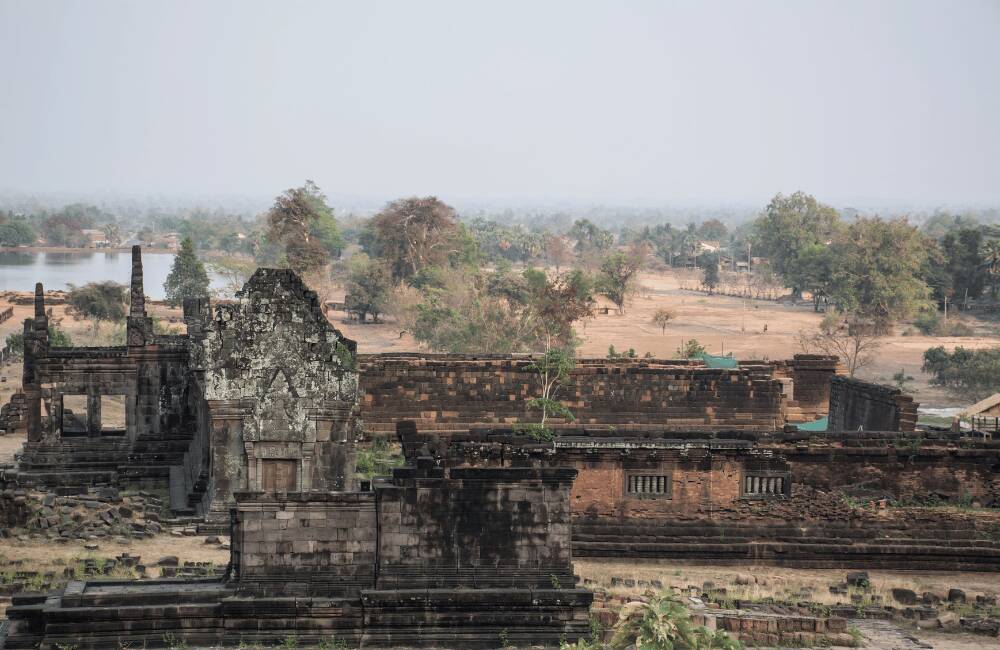
Nam Et–Phou Louey National Park
In northeast Laos, Nam Et–Phou Louey National Park protects some of the country’s last untouched jungles. It’s home to rare species like tigers, leopards, and Asian elephants.
While sightings are rare, the thrill of exploring their habitat is unforgettable. The highlight is the Night Safari,canoeing down the river in complete darkness, listening to the jungle come alive.
Guided treks also let you learn from locals about plants, animals, and village life, while supporting conservation and community livelihoods.
Plain of Jars
One of the region’s greatest mysteries, the Plain of Jars is a UNESCO World Heritage Site in Xieng Khuang province.
Here, thousands of massive stone jars, some over 10 feet tall, lie scattered across the plateau. Estimated to be over 2,000 years old, their purpose remains unknown, maybe rice storage, wine fermentation, or funerary urns.
The hauntingly beautiful landscape, however, still bears scars from heavy bombing during the Vietnam War, so stick to marked safe areas when visiting.
Kong Lor Cave
Laos is rich in karst landscapes, which means endless caves. The most famous is Kong Lor Cave, inside Phou Hin Poun National Park.
This 7.5 km river tunnel can only be explored by boat. Imagine gliding in darkness with only a flashlight illuminating towering limestone walls and rock formations. At points, the cave reaches 300 feet in height and width, an awe-inspiring sight.
Stay in Kong Lor village or Thakhek before making the trip, and bring waterproof clothing as you might get splashed along the way.
Thakhek Loop
For motorbike adventurers, the Thakhek Loop is legendary.
This 3–5 day circuit starts and ends in Thakhek, winding through limestone mountains, caves, and remote villages. While Kong Lor Cave is the highlight, other gems include Tham Nang Ene Cave, the Buddha Cave, and turquoise swimming holes.
Roads have improved, but expect dirt tracks and sharp bends, part of the adventure. Local hospitality in small villages makes the journey even more memorable.
Muang Ngoi Neua
Accessible only by boat from Nong Khiaw, Muang Ngoi Neua is a riverside village where time slows down.
With rice fields, mountain trails, and caves like Tham Kang (used as a war shelter), it’s a peaceful escape. Life here is simple: hammocks overlooking the river, kayaking, and sunset dinners at family-run restaurants.
For more adventure, hike to nearby villages like Ban Na to see authentic rural life.
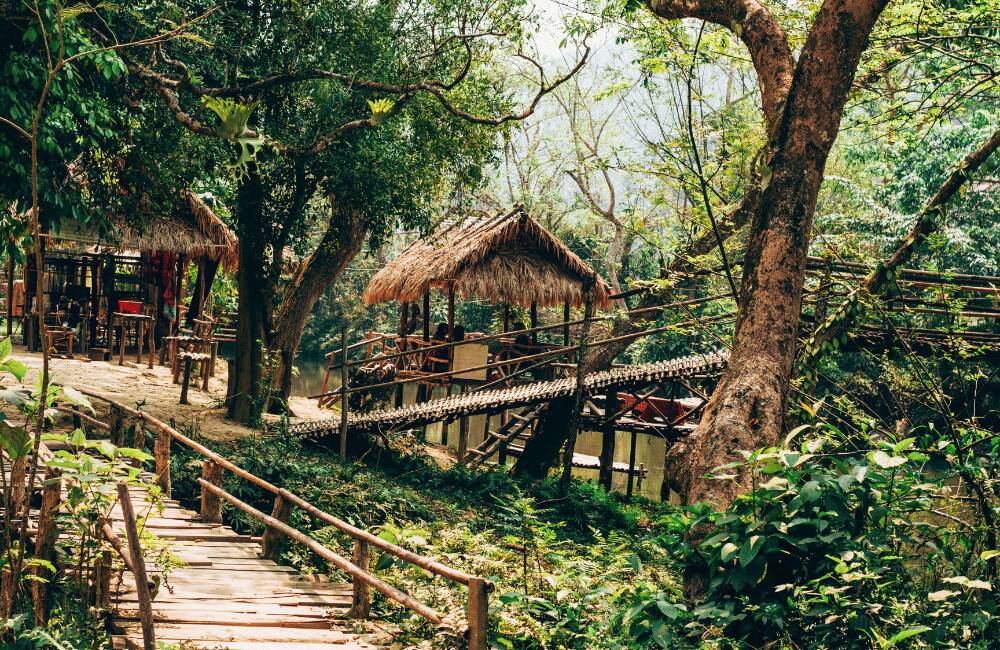
The Mekong River
The Mekong is not just a river, it’s the lifeblood of Laos. It winds through mountains, nourishes rice fields, and sustains daily life.
At dawn, wooden boats carry fishermen across misty waters. On its banks, children play, women wash clothes, and monks in saffron robes cross silently.
Traveling along the Mekong is traveling into Laos’ soul. A slow boat from Huay Xai to Luang Prabang reveals jungle scenery and golden temples. In the south, around Si Phan Don, the river branches into thousands of channels and islands.
At sunset, its waters glow gold and purple. Sitting by the river and watching it flow is to understand Laos without words.
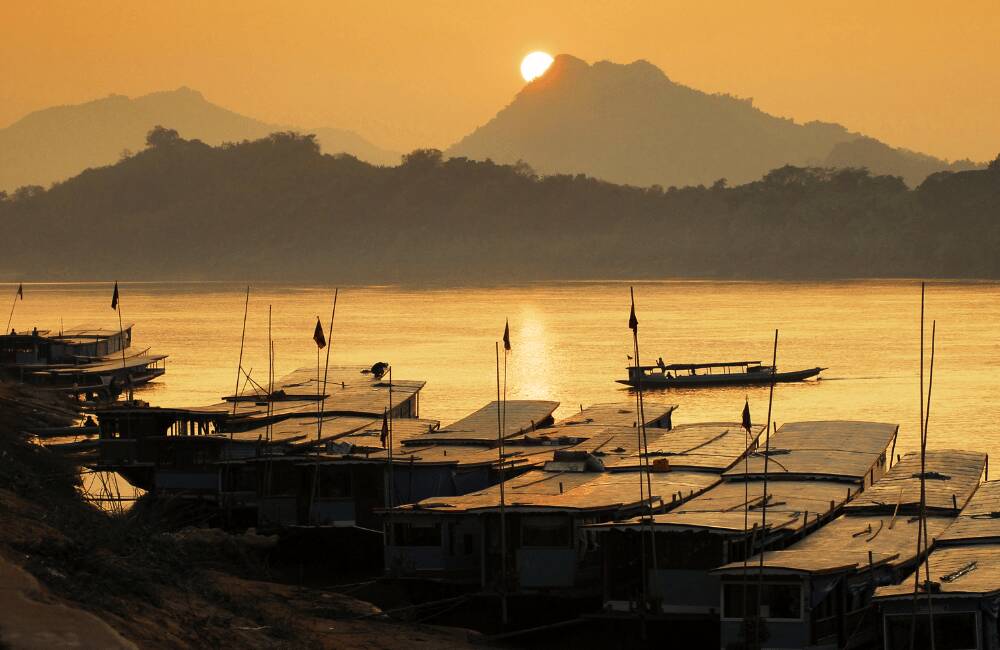
When is the best time to visit Laos?
Laos is a year-round destination, but the best time depends on your priorities: weather, budget, and crowds.
- Dry Season (Nov–Apr): The best overall time, with cooler, drier weather (60–75°F/15–25°C). Great for exploring temples, trekking, or boating. But it’s also peak season—expect higher prices and more tourists.
- Rainy Season (May–Oct): Expect warm temperatures and frequent showers, but also lush landscapes, fewer tourists, and lower prices. Some local festivals, like the Rocket Festival (Boun Bang Fai), happen during this time.
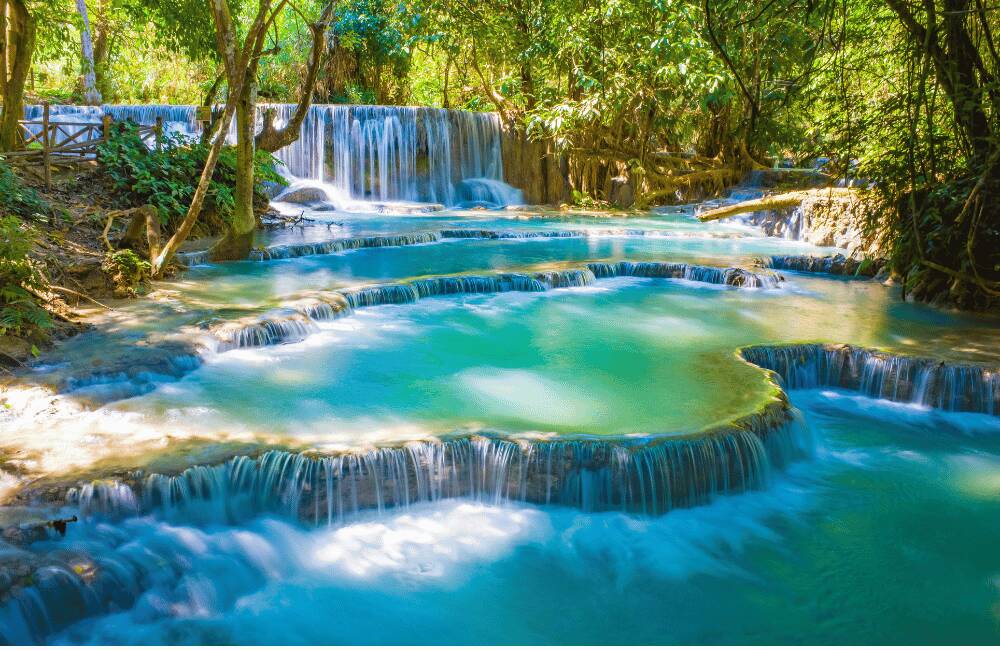
Is Laos worth visiting?
Absolutely. Laos is a rare gem combining ancient temples, vibrant cities, rural villages, rich culture, and breathtaking scenery. It remains one of Southeast Asia’s least-crowded destinations, meaning more authenticity for those who make the trip.
Is Laos safe?
Laos is generally safe, with lower crime rates than many Southeast Asian countries. Still, take precautions against petty theft in markets and bus stations.
The main risk lies in rural areas with leftover unexploded ordnance from past wars, stick to marked paths and follow local advice.
Travel insurance is strongly recommended, covering medical emergencies and potential evacuations to nearby Thailand, where healthcare is more advanced.
How many days do you need in Laos?
Plan at least two weeks, ideally three, to explore Laos at a comfortable pace. Transport is often slow, with rough roads and long bus rides. Trains connect Vientiane to the north, but not the south. Flights are quicker but pricier.
That said, Laos is best enjoyed unhurried. Savor the smells, sights, and rhythms, it’s the kind of country that stays in your heart forever.
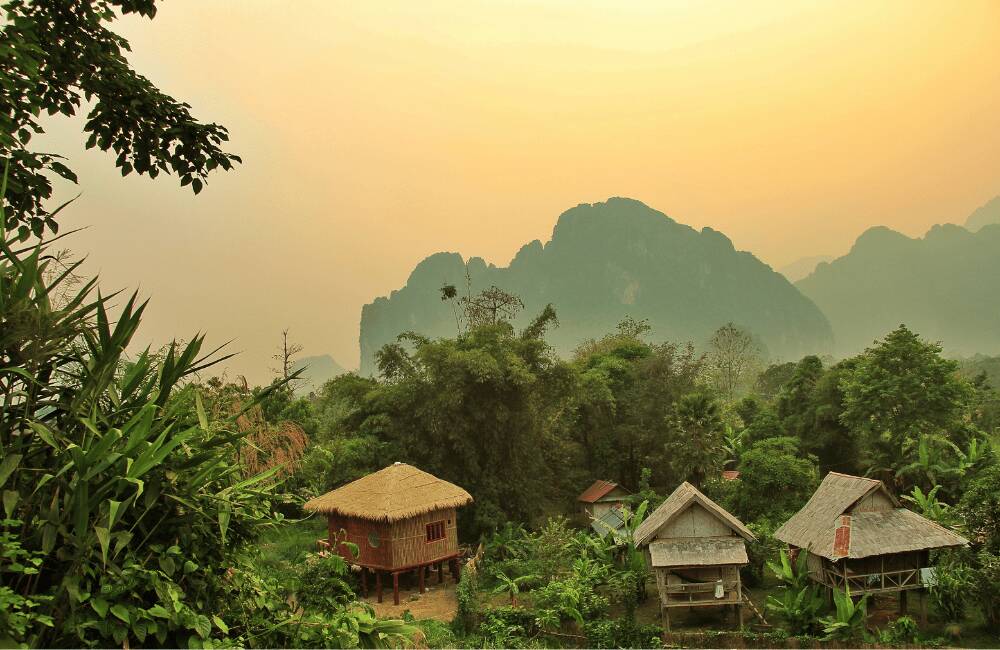
Travel protected with Heymondo
Laos wins travelers over with its serenity, spirituality, and wild nature. To fully enjoy it, having comprehensive travel insurance is essential.
With Heymondo Travel Insurance, you get:
- Medical assistance with coverage up to $10,000,000 USD
- Optional trip cancellation coverage, protecting you against 47 possible causes.
- A 24/7 travel assistance App with free emergency calls, medical chat, and easy policy management.
Because you never know what might happen, traveling with reliable insurance like Heymondo is the best way to explore Laos without worries.
Featured stories

